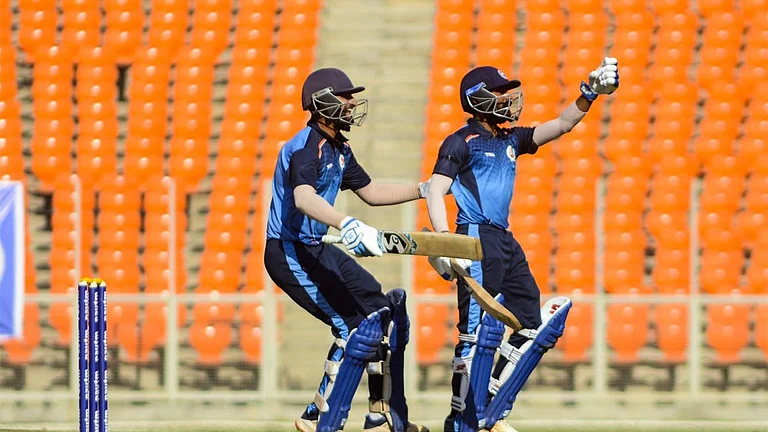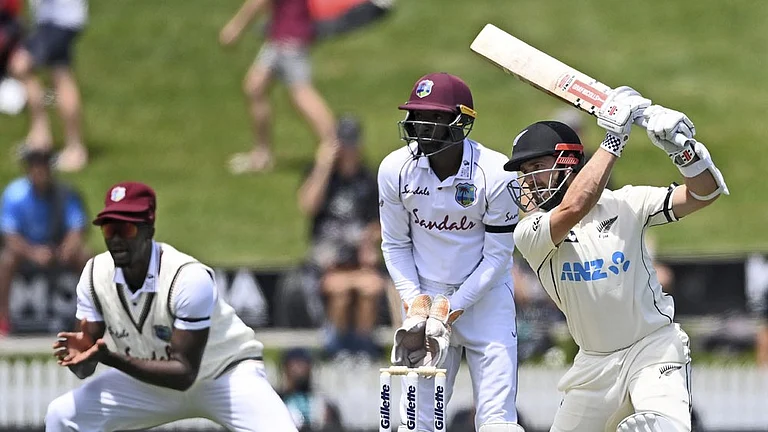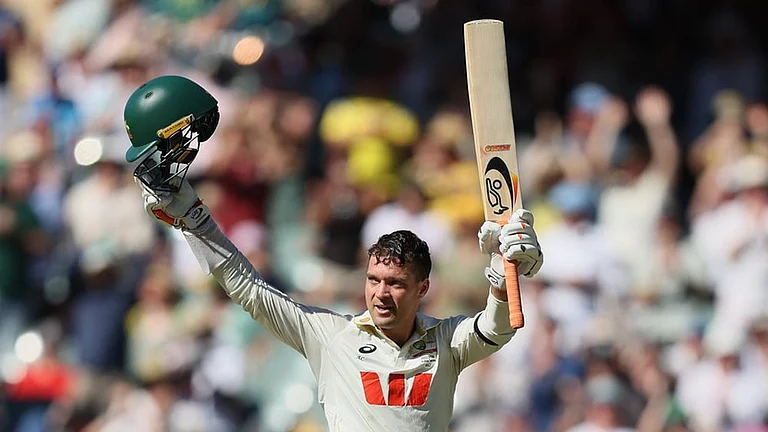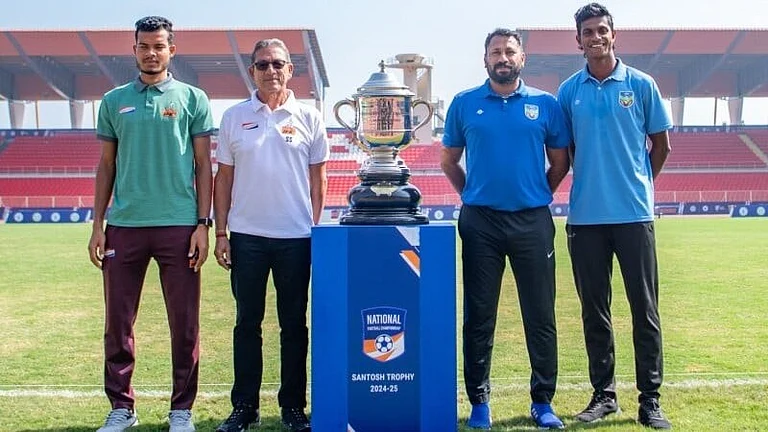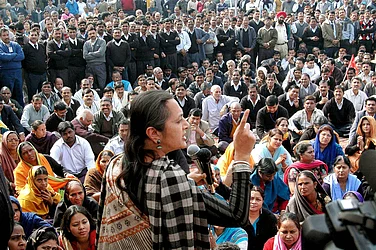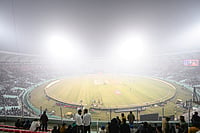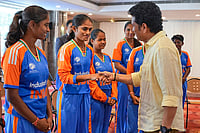The Union Minister of Road Transport and Highways, Nitin Gadkari, speaks to Neeraj Thakur and Rajat Mishra about his strategies for growth and dealing with issues like land acquisition and infrastructure financing. Edited excerpts
Since 2014, India has seen massive infrastructure development—especially of roadways and expressways. How did you manage to develop infra projects at a rapid pace?
When I was a minister in Maharashtra, I got the opportunity to build the Mumbai-Pune Expressway, 85 flyovers, Bandra Worli Sea Link and so on. At that time, my former secretary had told me about a statement by John F Kennedy about inspiration and motivation. He said that American roads are not good because America is rich, but America is rich because the prosperity is coming from the roads. Wherever there is infrastructure, water, power, transport and communication, we will get industry, trade and business. At the same time, it will create more employment opportunities.
The dream of Prime Minister Narendra Modi is to make India a $5 trillion economy. Our mission is to make India the third-largest economy in the world, and roads are very important to achieve this. That’s why our prime minister has given the highest priority to infrastructure development since 2014.
The budget for roads and highways is Rs 2.8 lakh crore. We have public-private investment; we do not have resource constraints. We are everywhere—from Karnataka and Haryana to Kashmir and Kerala. By the end of 2024, our national highway road network will be equivalent to that of the US.
Building all these projects requires a lot of negotiation in terms of land acquisition. In the past, most of India’s infrastructure projects met with protests by people because they did not want their land to be acquired. This government does not seem to be facing that kind of problem. What has been your strategy?
We decided that land acquisition and rules will be finalised by the states. And now we are paying good prices to the farmers. Before taking charge as minister, we had 406 stalled toll projects and non-performing assets (NPAs) worth Rs 3.85 lakh crore in the banks. My ministry and I saved the banks from the NPAs of Rs 3 lakh crore. Today, we do not have any problem. First of all, for land acquisition, we already have an arrangement with the state governments for persuasion. Then we get the clearances from the environment and forests ministries of both the Union and state governments. Without acquiring 90 per cent of the land, we do not go ahead with the final project. It is not just my credit, but the credit goes to all the stakeholders.
Recently, you said that you have not seen a single good detailed project report (DPR) in your lifetime for roads. You have also said that you are thinking of inviting international firms to implement projects. What do you think is the reason behind this?
The problem is that as part of the tender process, we have to do the DPR. So, there is a problem with our procedure. We are trying to rectify things and involve people who can make perfect DPRs to reduce the cost.
The Comptroller and Auditor General of India (CAG) has expressed concerns over cost overruns in the Dwarka Expressway. What is your response?
The 29-km Dwarka Expressway is a state-of-the-art project. In our Bharatmala programme, we have proposed 5,000 km at a cost of Rs 91,000 crore; adding a 2-4 lane shoulder. The cost is coming to Rs 18 crore per km. It was written within brackets that the ring road and the bridge cost would be worked out after the finalisation of the DPR. We have not finalised the cost because the DPR was not ready. Now, the CAG has erroneously calculated that the average cost is Rs 18.2 crore per km by ignoring the nature of the project which has been clearly mentioned in the CCEA (Cabinet Committee on Economic Affairs) Approval Document.
The e-tender process was transparent and multiple bidders participated in every package. Now, the CAG considers that if the cost is Rs 18 crore per km for 2-4 lane pure shoulder, this cost is coming to Rs 250 crore. For example, under package 1, the length of the expressway built was 76 km. There were five bidders; the tender cost was Rs 1,514 crore, but we awarded it at Rs 1,349 crore, which is 10.91 per cent lesser than the tender cost. Similarly, under package 2, the length was 145 km and the tender cost stood at Rs 1,469 crore. But we awarded it at Rs 1,540, which is 4.83 per cent higher than the tender cost. But in package 3 and package 4, we awarded the tender less than the tender cost by 25.12 per cent and 13.73 per cent, respectively. The cumulative award cost of all four packages is 12 per cent lesser than the cost put together.
There are tunnels and bridges, as it is a state-of-the-art project, so 563 km means it is a 231.5-km single-lane road. In this particular project, the cost was Rs 9.35 crore per lane km. We have saved Rs 700 crore, with 12 per cent lower civil cost.
The National Highways Authority of India (NHAI) has been temporarily barred by the government from accessing the debt market. Do you think that that was a sign of caution?
Not at all. Our rating is AAA; our problem is our expenditure is not there. Now, I will give the example of the InvITs (Infrastructure Investment Trusts) model. When we launched our bonds in the capital market, on the first day, the bond was oversubscribed seven times. We are giving 8.05 per cent interest per year and, especially for poor people, we give them a monthly interest of 8.05 per cent at AAA rating, while the bank interest is just 5.05 per cent.
How are you insulating India from future troubles with infrastructure development?
Our traffic density is very high. One thing is very important. If you want good services, you have to pay, either to us or to somebody else. Public-private investment is the BOT (build-operate-transfer), HAM (hybrid annuity mode), and then different types of projects. I have successfully implemented the project in Mathura where sewage water is converted to clean water. It was purchased by Indian Oil, and we are earning Rs 20 crore per year.
We can even attract capital investment from the private sector in solid waste management and to increase the speed of growth. It is time that along with the government’s budget, we have more public-private investment. The road sector is an ideal investment. It is a success story for the world.
(This appeared in the print as 'We Are Trying To Rectify Things And Involve People')







